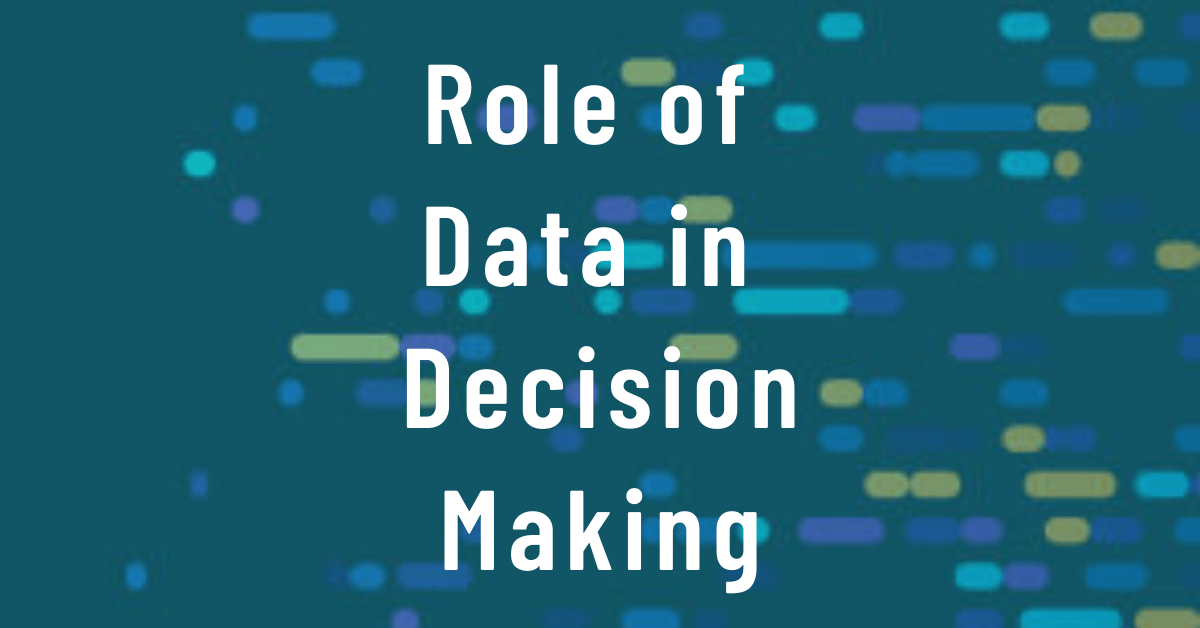Data plays a vital role in decision-making. Why? Machines would collect data, analyze it, and take decisions based on the insights which are derived from the collected information. With the help of data, the machine researched the past and predict what is to happen in the future. Without data there is a big risk, deciding without research and knowledge can cause a problem for the organization. Therefore, data is the most important thing for decision making.
How are Data and Decision-making so closely related?
Every individual has to take a lot of decisions daily. When you are stuck in a choice between various alternatives then you have to make decisions. Decision-making leads you toward two ways either positive or negative. It will bring either happiness, success, and well-being or sadness, failure, and distress in your life. It all depends on your decision-making.
Decision-making has become an important part of most businesses. It is a process done by the comity of professionals to bring prosperity to an organization. This process plays an important role in the functioning of an organization. Now with the advancement in modern technology, organizations want a machine to decide for them. They want a machine to identify the problem, do research, check alternatives, and make decisions. How a machine can decide?
Steps of data-driven decision
The success of decision-making depends on many factors such as the quality of data and the method of data collection. The data-driven decision includes numerous steps:
Identifying the problem
Firstly, identify the problem. For an organization, the problem would be how to increase productivity? Or how to increase the company’s growth? This step will identify the real query.
Find the right data
Gathering the right data is as crucial as asking the right questions. For smaller businesses or start-ups, data collection should begin on day one. Every time the big data is not the solution to your problem. You need to select the particular data set according to your problem. Selecting a data set according to your problem can make your work easy.
Clean and analyze the data
Once your strategy and goals are set, you will then need to find the questions in need of an answer, so that you reach these goals. Asking the right data analysis questions helps teams focus on the right data, saving time and money. In the examples earlier in this article, both Walmart and Google had very specific questions, which greatly improved the results. That way, you can focus on the data you need, and from bluntly collecting everything “just in case” you can move to “collecting this to answer that”.
After you get a particular data set, you have to make sure that it should be inaccessible form. The data must be structured and clean. To make it efficient we need to clean it.
Report
After getting the data in clean form. Make graphs, patterns, and matrices from the data set to find the solution to your problems.
Outcome
After analyzing the graphs and matrices, make a decision and give the conclusion.
The decision that is taken based on data has numerous benefits that are discussed below.
Confident Decision
After you have your question, your data, your insights, then comes the hard part: decision making. You need to apply the findings you got to the business decisions, but also ensure that your decisions are aligned with the company’s mission and vision, even if the data are contradictory. Set measurable goals to be sure that you are on the right track… and turn data into action!
With the help of the data, they can manage to decide even a complex problem. The facts, figures, graphs, and matrices help the model of organization to jump over a successful conclusion. For instance, if a company cannot decide whether to continue or discontinue with a product. They should take a survey from their users after several questions.
Less of Risk
In business, there’s always an element of risk. To choose a new path an individual or an organization has to take a risk. But the decision taken with the help of data makes you less vulnerable to risky decisions going wrong. For example, if any company wants to do some business at a new venue and cannot predict the output. Data-driven decision-making can make this problem easy. Through the data, they can check other companies of that place. If their production matches with the requirement, they can build a new company there, otherwise, they will find a new venue. That’s how data reduces the chance of risk.
Save time and cost
Using data-driven decisions, an organization can save its cost and time. The data-driven decision is an automated process that can be done in less time. Whereas if an organization wants to make a decision, they require plenty of workers and this process would take too much time to complete. So, the decision-making with the help of data can save time as well as the cost of the employees.
According to a recent survey of Fortune 1,000 executives conducted by New Vantage Partners for the Harvard Business Review, these initiatives vary in their rates of success.
One of the most impactful initiatives, according to the survey, is using data to decrease expenses. Of the organizations which began projects designed to decrease expenses, more than 49 percent have seen value from their projects. Other initiatives have shown more mixed results.
Consistency
The data-driven decision has the advantage of consistency over time. The employees of an organization can learn from the machine that how the decision is made. People can identify the usage of data that is collected, clean, analyze, and conclude accordingly. The involvement of every individual in an organization enhance their skills and thoughts which will automatically improve the organization
Conclusion
Data is very crucial for the overall performance of every organization. It forms the central part of the organization. Data-driven decision-making is vital as it enables us to observe data from the actual time, the real-time to come up with predictive insights. It provides the ability to research and know what is working well for the business and what is not. This helps the management to implement policies and strategies which are useful for the development of the company. Data-based decision management leads to improved transparency and accountability. It is recommendable for every organization to uphold an effective data-driven decision-making practice.




